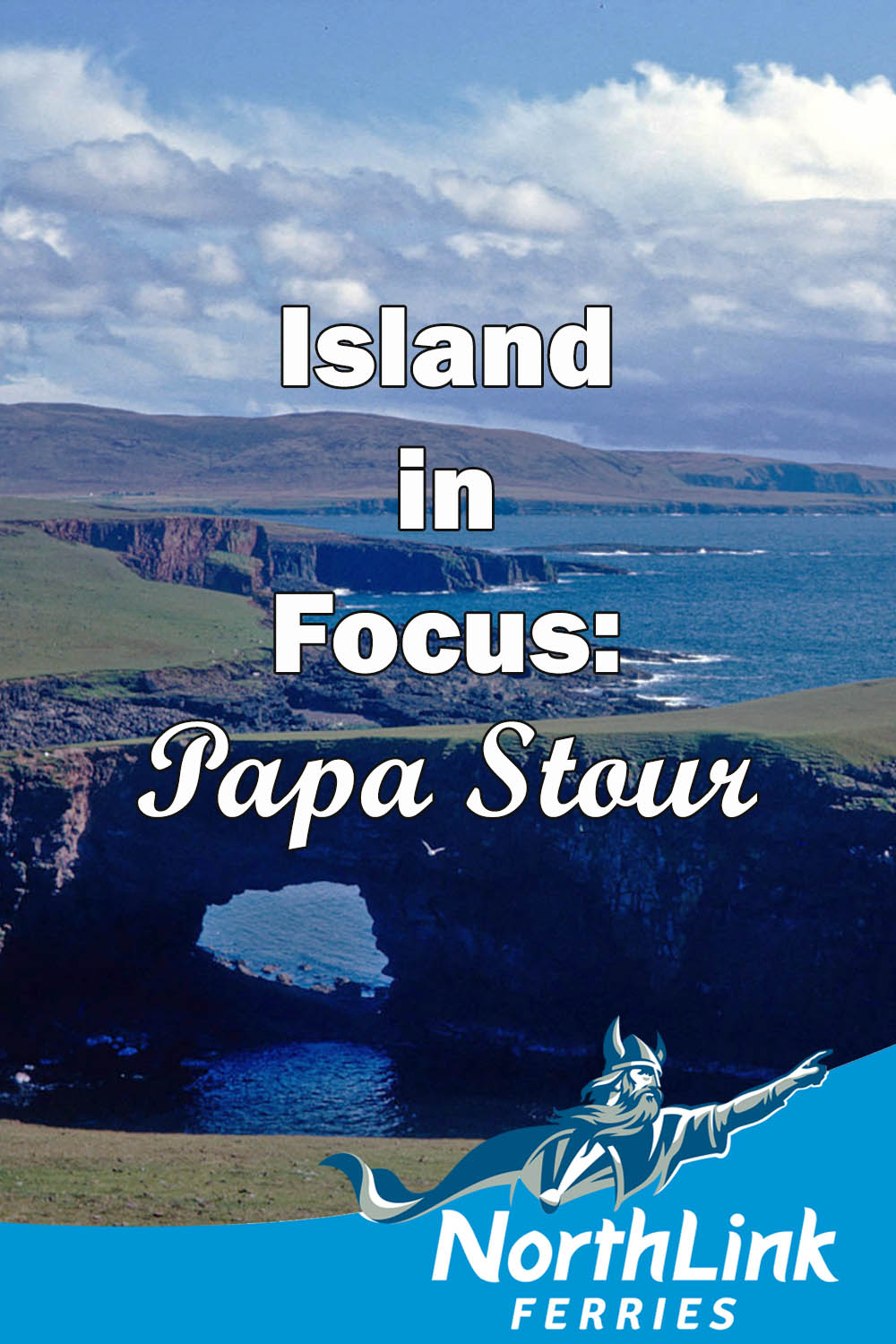Island in Focus: Papa Stour
Located off the coast of the West Mainland, Papa Stour is Shetland’s eighth largest island with an area of 3.2 square miles. Although at first this island appears unassuming with no amenities and a population of around ten people, it actually boasts some of the best coastal scenery in Shetland – and perhaps even the whole of the UK.
It is important to note that aside from a waiting room at the ferry terminal with toilets and tea and coffee making facilities, there are no other amenities on the island. Make sure to come prepared and bring food and drink with you from the mainland.
The name Papa Stour is derived from the Old Norse ‘Papay Stóra’. This translates to the ‘Big Island of the Priests’ which is believed to refer to a community of Celtic missionaries that once lived here from as early as the 6th century.
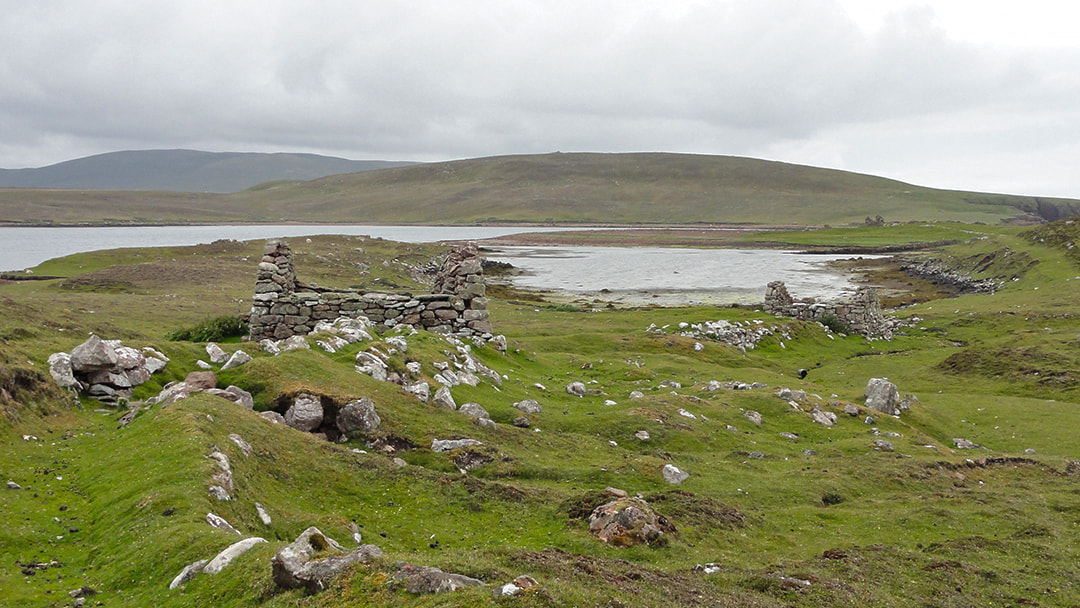
During the Norse rule in Shetland, Papa Stour was utilised as a strategic outpost and the isle is punctuated with archaeology and history from this period. Although there is evidence of ancient settlements here, there aren’t many physical ruins. This is presumably because stone was repurposed for newer structures due to the island’s resource scarcity.
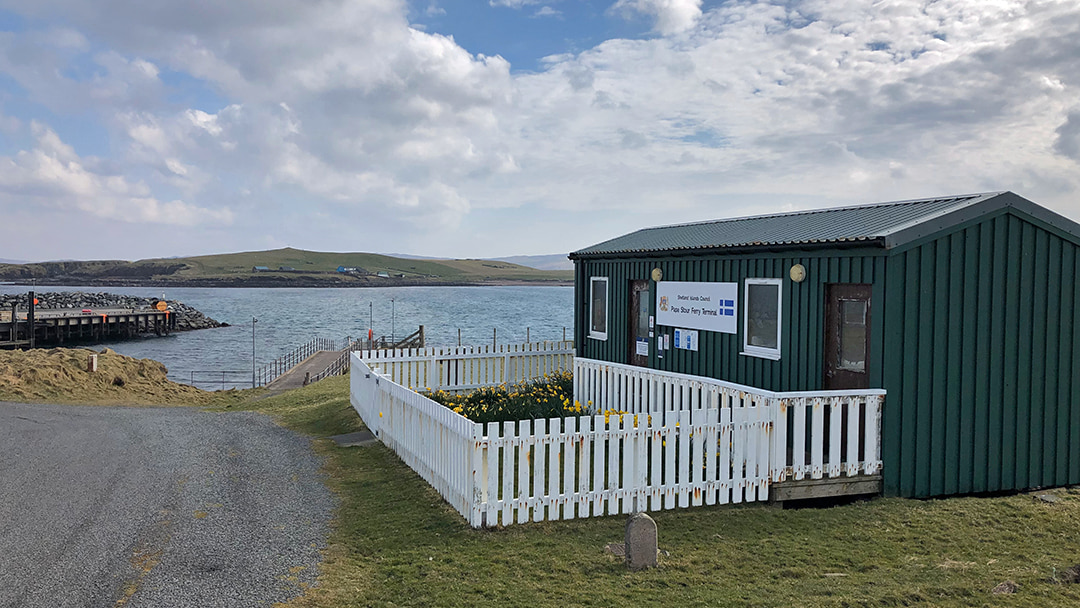
Although the 40-minute ferry from West Burrafirth transports vehicles as well as passengers, there is no need to bring your car along as there is only one short road in Papa Stour – meaning the best way to see the island is on foot! There is a 17km circular walk that leads you all the way round the island, however this can be shortened as required.
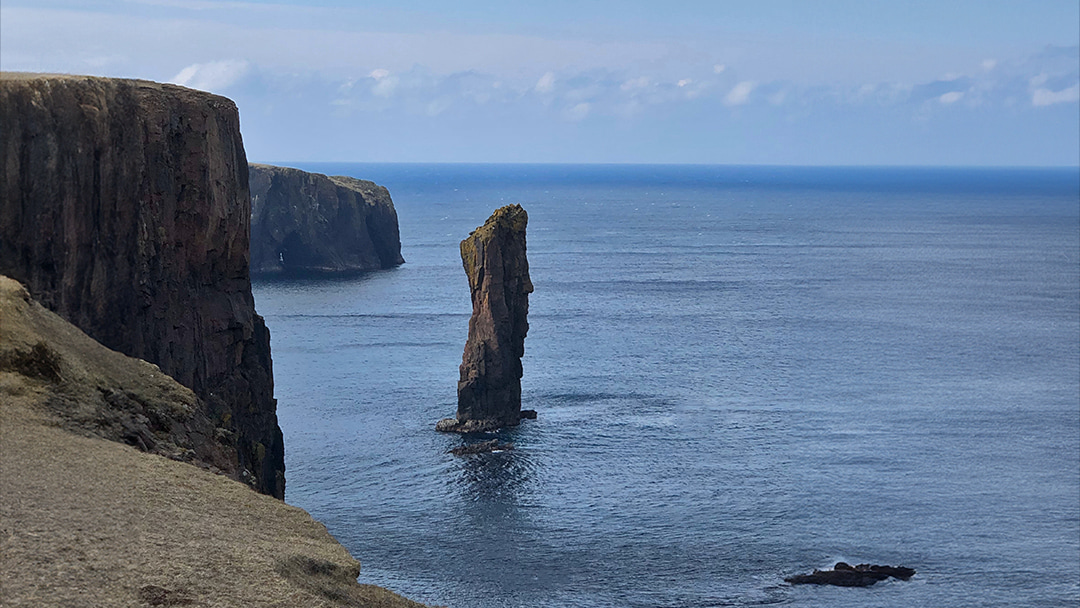
Spectacular Scenery
If you enjoy walking or hiking with awe-inspiring sea views, then Papa Stour is the island to visit. Its exposed western coast in a constant battle with the Atlantic Ocean, with the force of the crashing waves eroding and carving its shores into a remarkable sequence of sea stacks, caves, arches, blowholes, and geos. Some examples include Aesha Head, Akers Geo, Snolda Sea Stack and Da Hol o’ Boardie.
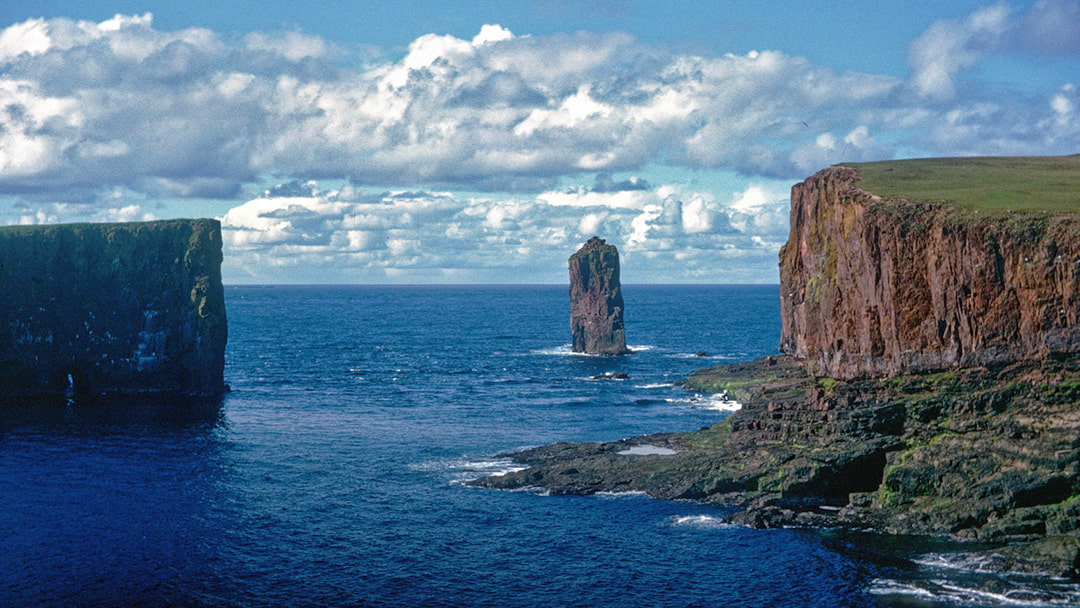
One of the highlights along Papa Stour’s coastline is Kirstan’s (or Christie’s) Hole – known as one of the finest sea caves in Britain! The caves spread underground to form vast tunnels which are exceptional to explore by boat in settled weather. The cave partially collapsed in 1981 to form a gloup (an opening in the roof of a sea cave), allowing you to see into the cave and the sea below.
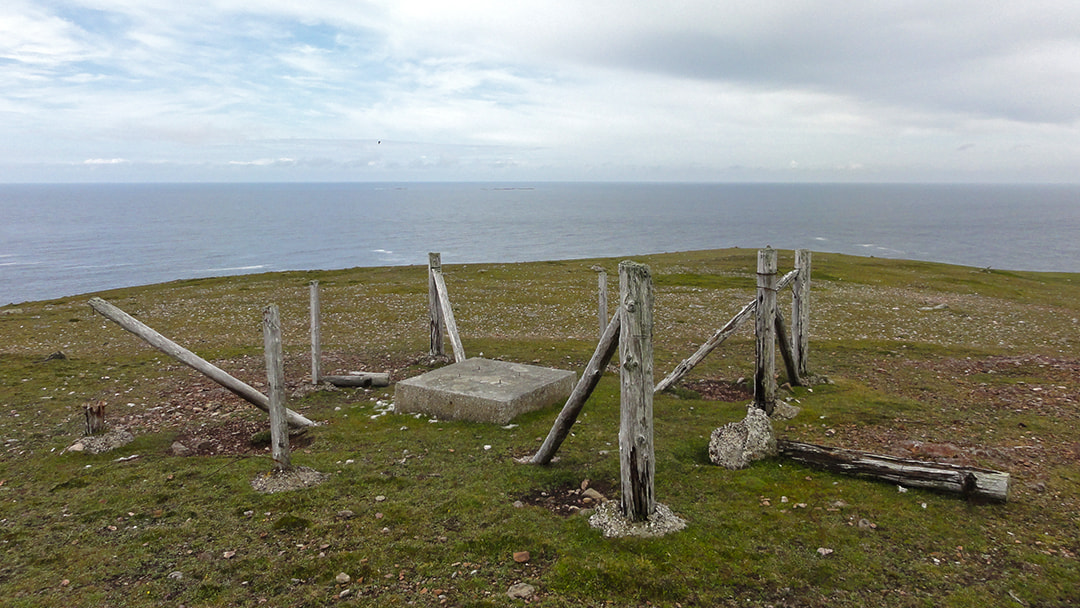
The highest point on the island is the Virdi Field which sits 87m (285ft) above sea level and provides lovely panoramic views across the island. In clear weather conditions, you can even look out to the Shetland Mainland and Muckle Roe, as well as the isle of Foula.
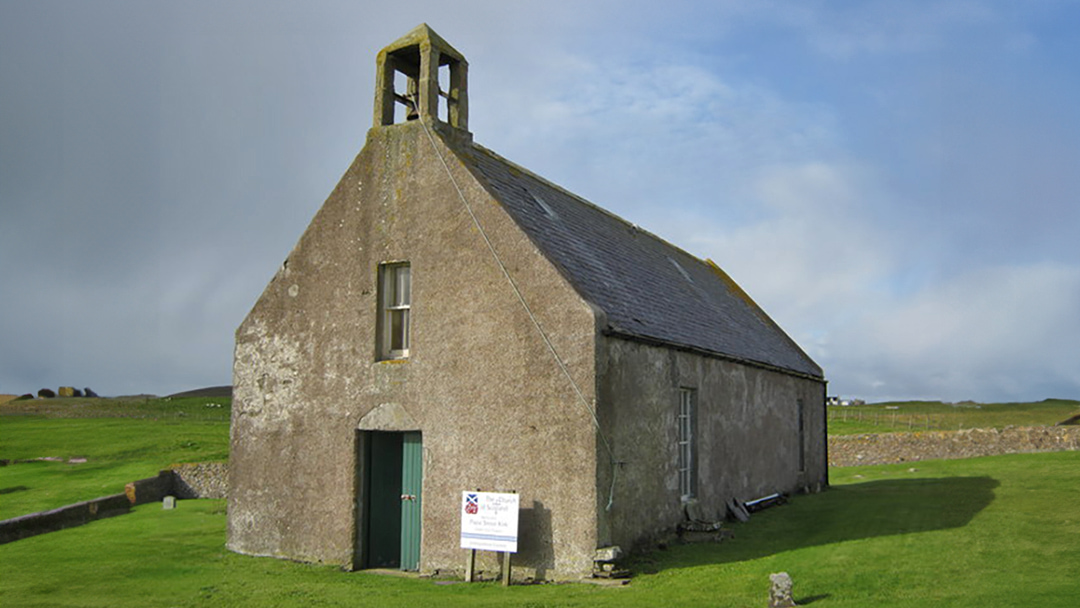
Papa Stour Kirk
Over 200 years ago in 1806, the Papa Stour Kirk was built on the southeast end of the island in the islands’ main settlement of Biggings.
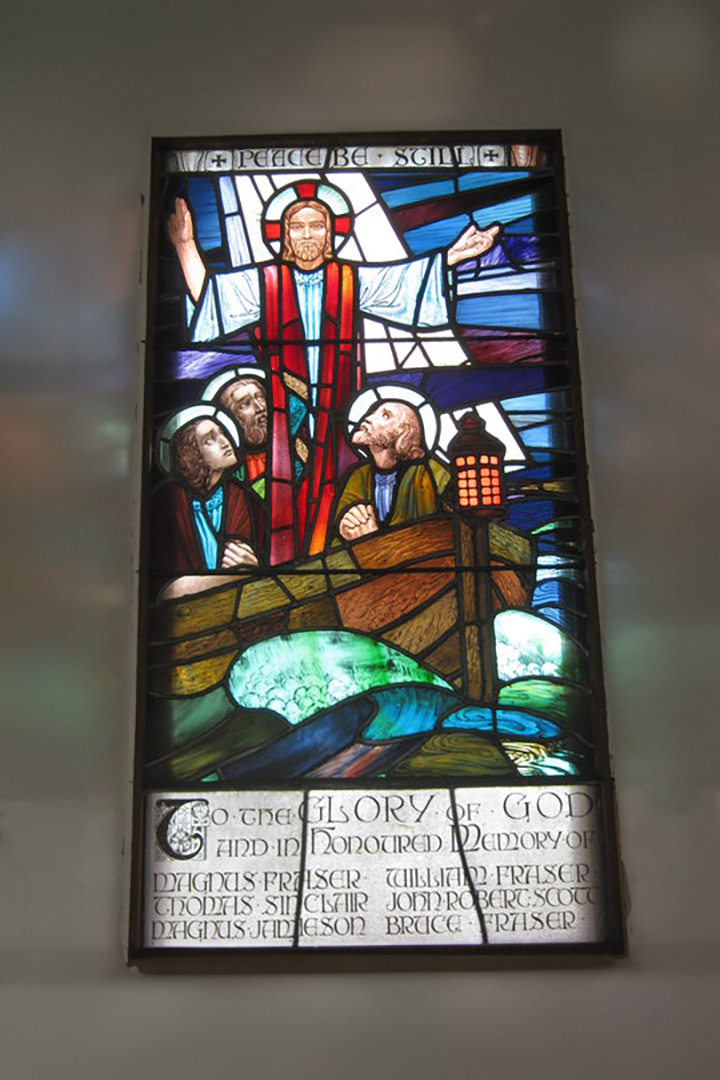
In its west wall, the kirk features a beautiful stained-glass window designed by artist Victor Noble Rainbird. The stained-glass, which was installed in 1921, was created as a memorial to commemorate the lives of the men from Papa Stour who lost their lives during the First World War and is also one of the last surviving pieces of work by Rainbird.
After acquiring the kirk from the Church of Scotland in 2016, the Papa Stour History and Community Group are working to renovate and repurpose the church to also serve as a community and tourist center.
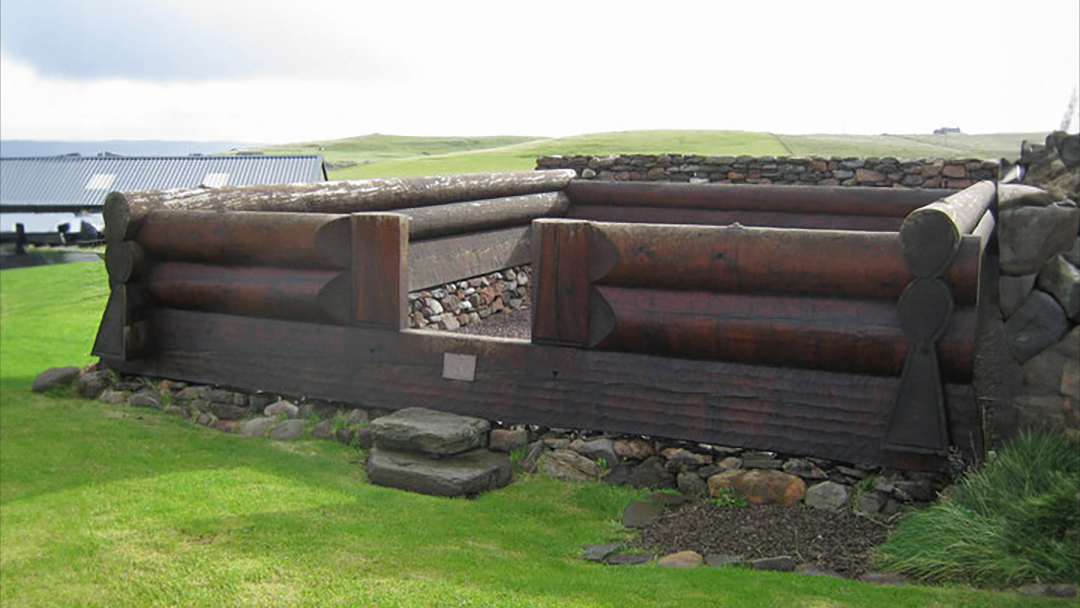
Papa Stour is home to Shetland’s Oldest Surviving Document
For around 400 years, the Shetland Islands belonged to Norway before being pledged to Scotland in 1469. During the Norwegian control of Shetland, Papa Stour was held by the Duke Hakon of Norway (who later became King Hakon V).
A disagreement about taxes and rent on the island developed between the Duke’s bailiff and a local woman in 1299. This incident is documented in what is now known as the ‘1299 document’, which is the oldest surviving document in Shetland.
The conflict happened in Biggings, and after excavations, the remnants of a large wooden farmhouse called a “stofa” were discovered. You can still visit the partially reconstructed stofa in the village of Biggings.
Ve Skerries
The Ve Skerries, translating from Old Norse meaning ‘West Skerries’, are a group of small rocky isles located about 3 miles northwest of Papa Stour. These isles have a turbulent past because of its dangerous combination of low-lying coastlines and unpredictable currents, which has resulted in multiple ship wrecks.
In September 1979, a modest lighthouse measuring sixteen meters in height was constructed on the isle of Ormal to aid the larger vessels that navigated this area. Even as early as 1863, there were plans to build a lighthouse here, but the difficult terrain and bad weather made such plans unfeasible.
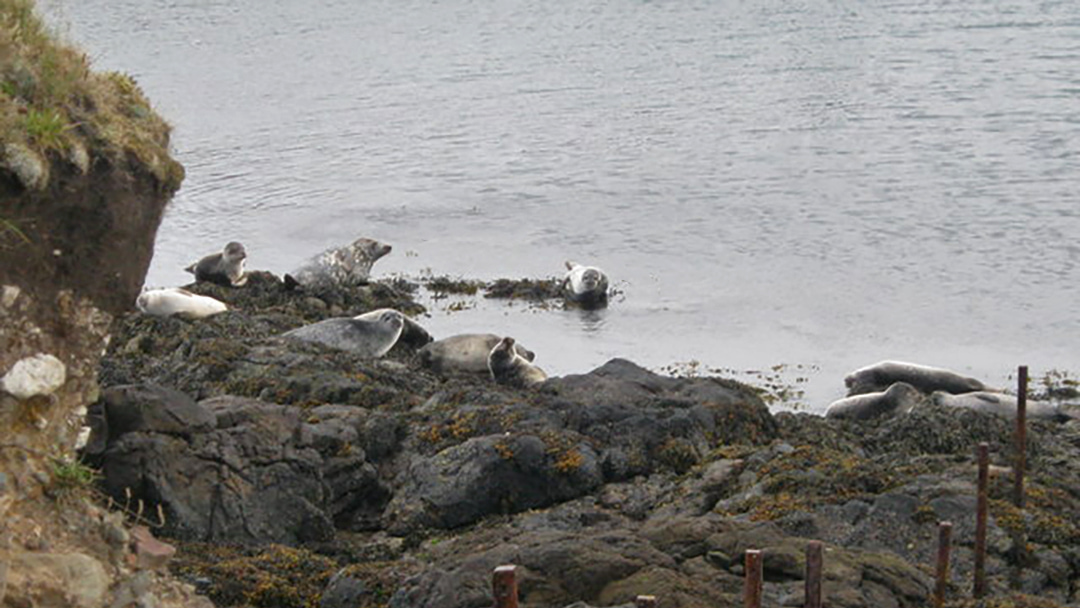
Spot Some Incredible Wildlife
As Papa Stour is a quieter island, it makes for a wonderful place to see a host of wildlife – especially seabirds. Papa Stour is now recognised as an internationally important area for the large number of Arctic Terns that nest here in summer. However, there are several other breeding birds here, such as Fulmars, Shags, Guillemots, Razorbills and Kittiwakes.
Grey Seals and Common Seals are regular visitors to Papa Stour and are often seen hauled up on the beaches and on the rocks along the western coast. The low rocky shores and voes also provide the perfect home for Otters and, if you’re lucky, Harbour Porpoises and Killer Whales have been previously spotted swimming past the island.
How do you get to Papa Stour?
After reaching Shetland from the Scottish Mainland with NorthLink Ferries, to get to Papa Stour you’ll need to take another ferry from the Shetland Mainland.
The inter-island ferry departs from West Burrafirth and the crossing takes about 45 minutes. The sailing occurs five days a week and booking is required. It carries foot passengers and vehicles, however as mentioned earlier, bringing your vehicle isn’t necessary.
The ferries to Papa Stour are operated by the Shetland Islands Council.
 By Amy Leith
By Amy LeithBorn and raised in Aberdeen with an admiration for Orkney and Shetland, loves to travel and visit new places, enjoys cooking, always listening to music, spends a little too much time on TikTok.
Pin it!